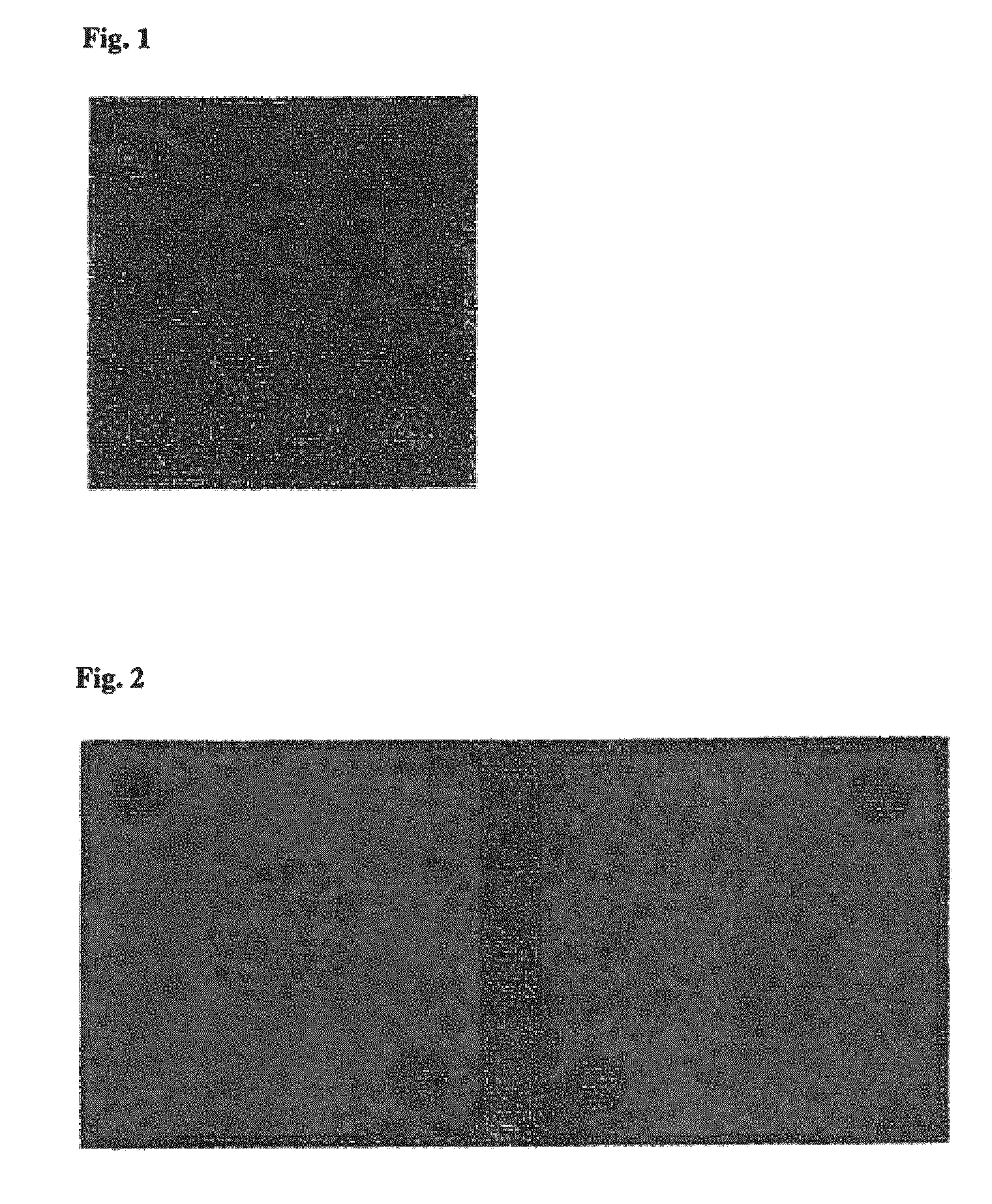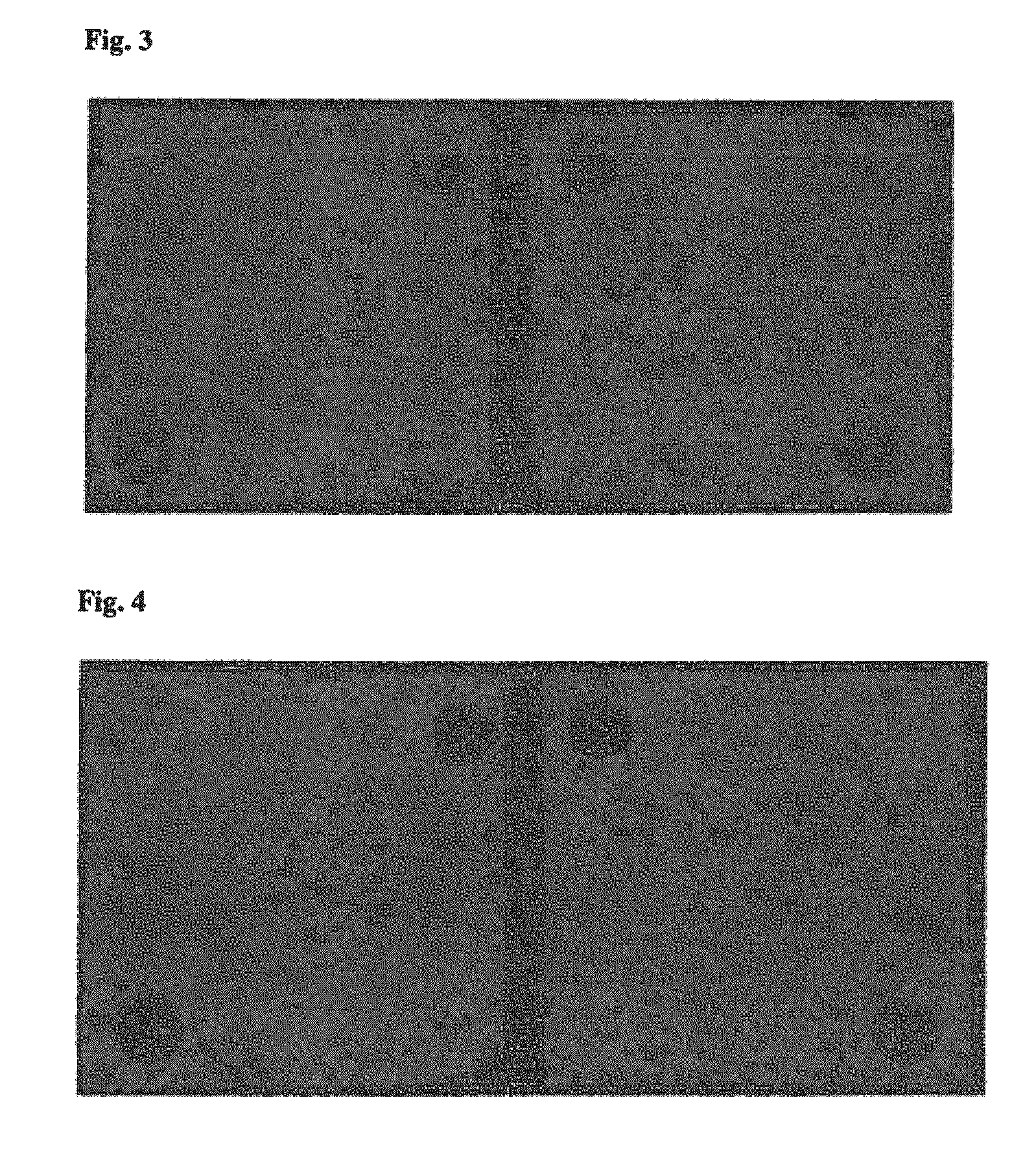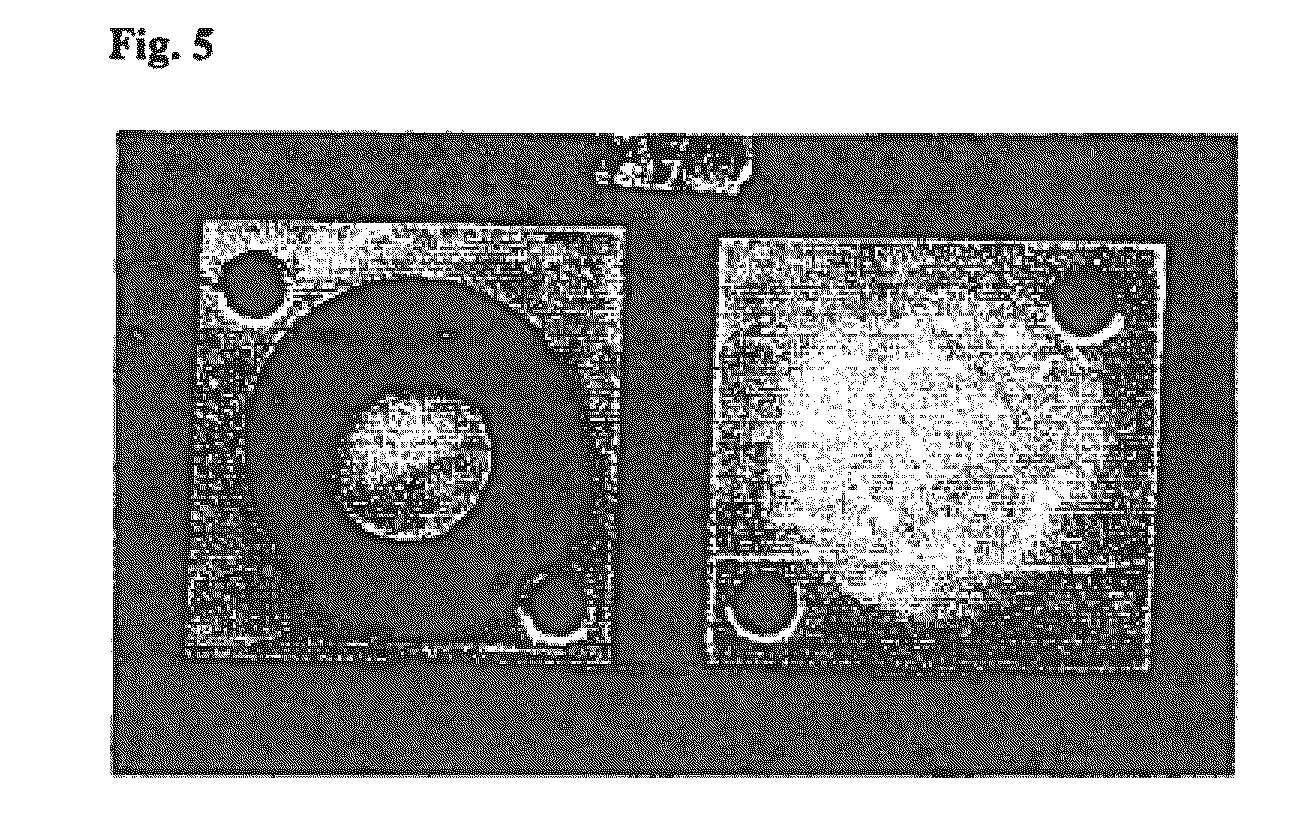Nitrile rubbers which optionally contain alkylthio terminal groups and which are optionally hydrogenated
- Summary
- Abstract
- Description
- Claims
- Application Information
AI Technical Summary
Benefits of technology
Problems solved by technology
Method used
Image
Examples
examples
I Chlorine Content
[0217]The chlorine content of the nitrile rubbers of the invention is determined as follows by a method based on DIN EN 14582, method A: the nitrile rubber sample is digested in a melt of sodium peroxide and potassium nitrate in a Parr pressure vessel. Sulphite solution is added to the resulting melt and the mixture is acidified with sulphuric acid. In the solution obtained, the chloride formed is determined by potentiometric titration with silver nitrate solution and calculated as chlorine.
II Storage stability
[0218]The dried NBR rubbers are characterized by the Mooney viscosity before and after hot air storage for 48 hours at 100° C., i.e. the Mooney viscosity was determined once directly after drying (i.e. before hot air storage) and also subsequently after hot air ageing for 48 hours at 100° C.
III Initial Vulcanization Behaviour and Vulcanization Rate
[0219]The initial vulcanization behaviour (Mooney scorch) is determined at 120° C. by means of a shear disc visco...
example series 1
NBR Latex Coagulation with MgCl2 and PVA (First Addition of MgCl2 at 20° C., then Addition of PVA at 90° C.)
[0236]In Example series 1, latex A (200 g) was first admixed at 20° C. with a 20% strength aqueous solution of the magnesium chloride precipitant and then admixed at 90° C. with a solution of PVA (4% by weight in deionized water).
[0237]In the non-inventive, comparative experiment (without PVA), an amount of 1.31% by weight of magnesium chloride was needed for quantitative latex coagulation. In the case of the inventive examples of Example series 1, 0.87% by weight of MgCl2 was used in each case, which was not sufficient for quantitative latex coagulation, and a determination was made of the minimum amounts of PVA required for quantitative latex coagulation.
[0238]
TABLE 5Example series 1Amount of PVAPolyvinyl acetateMgCl2based on NBRNo.used[% by weight][% by weight]Comparative—1.31—experiment1.1Polyviol W 30 / 2400.870.51.2Polyviol W 25 / 2400.870.51.3Polyviol W 25 / 1900.870.51.4Poly...
example series 2
NBR Latex Coagulation with MgCl2 and PVA (Simultaneous Addition of MgCl2 and PVA at 20° C. and Subsequent Heating to 90° C.)
[0239]In Example series 2), an aqueous solution comprising both the magnesium chloride precipitant and the PVA was metered into the latex A (200 g). The precipitant solution was added to the latex at 20° C., the amount of MgCl2 being held constant. Subsequently the mixture was heated to 90° C. with stirring. In the experiments of Example series 2, the amounts of PVA needed for quantitative latex coagulation were ascertained. These PVA quantities are documented in the table below.
[0240]
TABLE 6Example series 2Amount of PVAPolyvinyl acetateMgCl2based on NBRNo.used[% by weight][% by weight]Comparative—1.31—experiment2.1Polyviol W 30 / 2400.871.12.2Polyviol W 25 / 2400.871.52.3Polyviol W 25 / 1900.871.52.4Polyviol V03 / 1400.875.02.5Mowiol 4-880.873.02.6Polyviol M05 / 1400.871.02.7Polyviol M13 / 1400.870.82.8Polyviol W25 / 1400.870.52.9Mowiol 26 / 880.871.12.10Polyviol W40 / 1400.871...
PUM
| Property | Measurement | Unit |
|---|---|---|
| Temperature | aaaaa | aaaaa |
| Fraction | aaaaa | aaaaa |
| Fraction | aaaaa | aaaaa |
Abstract
Description
Claims
Application Information
 Login to View More
Login to View More - R&D
- Intellectual Property
- Life Sciences
- Materials
- Tech Scout
- Unparalleled Data Quality
- Higher Quality Content
- 60% Fewer Hallucinations
Browse by: Latest US Patents, China's latest patents, Technical Efficacy Thesaurus, Application Domain, Technology Topic, Popular Technical Reports.
© 2025 PatSnap. All rights reserved.Legal|Privacy policy|Modern Slavery Act Transparency Statement|Sitemap|About US| Contact US: help@patsnap.com



